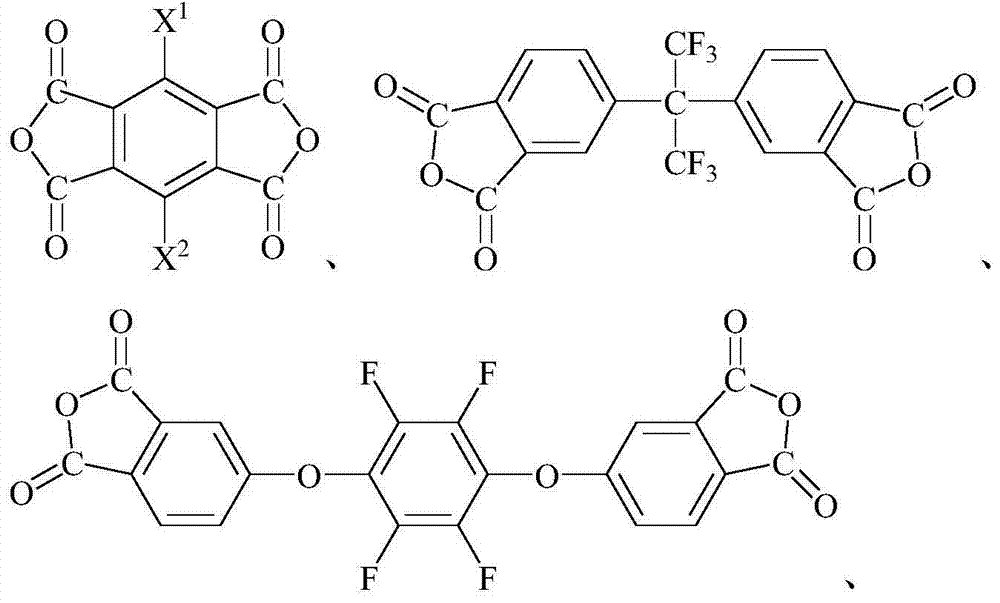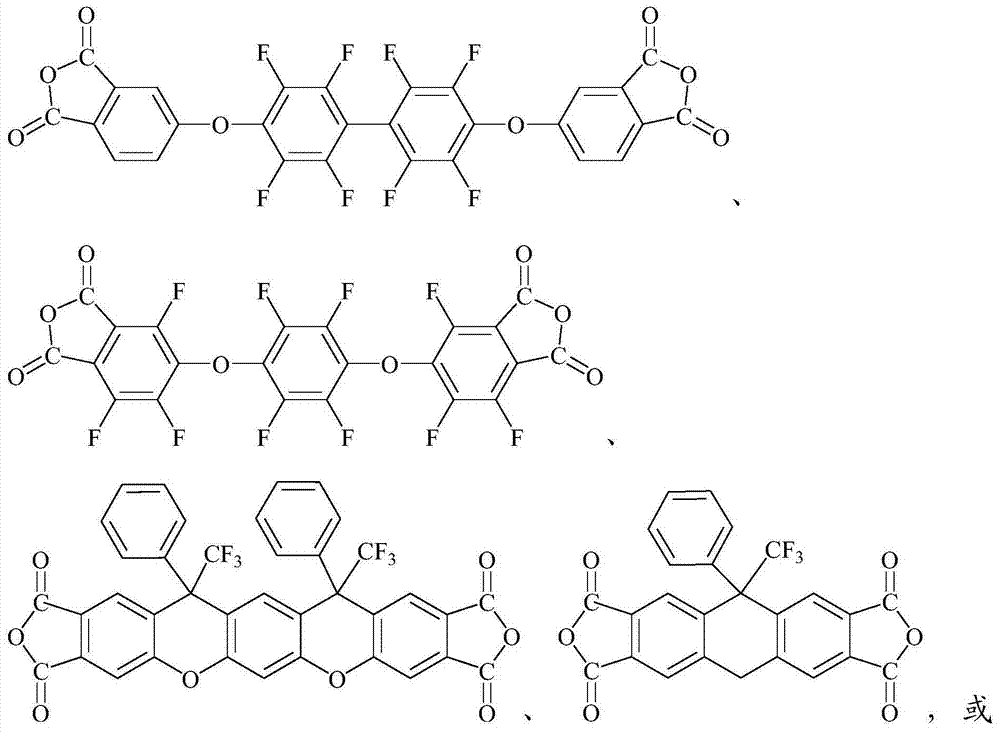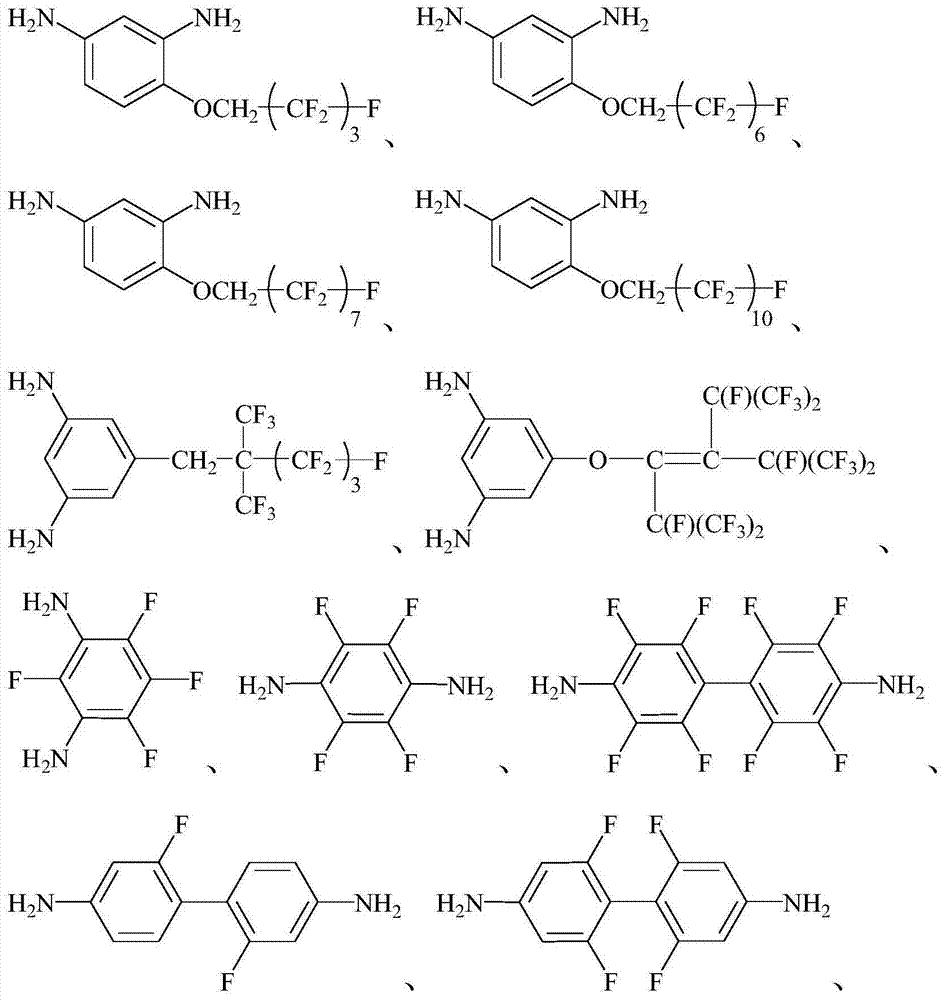Composition for flexible substrate and flexible substrate
A flexible substrate and composition technology, applied in the direction of circuit substrate materials, coatings, printed circuit components, etc., can solve the problems of poor moisture absorption resistance, unsatisfactory moisture absorption resistance, and poor stability. The effect of anti-hygroscopicity
- Summary
- Abstract
- Description
- Claims
- Application Information
AI Technical Summary
Problems solved by technology
Method used
Image
Examples
preparation example Construction
[0039] The preparation method of the polyamic acid resin comprises the following steps: a mixture of a tetracarboxylic dianhydride component and a diamine component comprising a bicyclic alicyclic tetracarboxylic dianhydride compound and a fluorine-containing tetracarboxylic dianhydride compound Dissolve in a solvent, carry out polymerization reaction at a temperature of 0°C to 100°C and react for 1 hour to 24 hours, and then carry out vacuum distillation of the above reaction solution with an evaporator to obtain a polyamic acid resin, or The above reaction solution is poured into a large amount of poor solvent to obtain a precipitate, and then the precipitate is dried under reduced pressure to obtain a polyamic acid resin.
[0040] Preferably, based on the total number of moles of the diamine component being 100 moles, the amount of the tetracarboxylic dianhydride component used ranges from 20 moles to 200 moles; more preferably, the tetracarboxylic dianhydride component The...
Synthetic example 1
[0119] A nitrogen inlet, a stirrer, a condenser and a thermometer are set on a four-necked conical flask with a capacity of 500 milliliters, and nitrogen is introduced, and the feed composition is added to include: 2.70 grams (0.025 moles) of p-phenylenediamine, 4.95 grams (0.025 moles) ) of 4,4'-diaminodiphenylmethane and 80 g of nitrogen-methyl-2-pyrrolidone were stirred at room temperature until dissolved. Then add 6.20 grams (0.025 moles) of bicyclo[2.2.2]oct-2-ene-2,3,5,6-tetracarboxylic dianhydride, 8.85 grams (0.025 moles) of 3,6-bis(trifluoro Methyl)-1,2,4,5-pyridine tetracarboxylic dianhydride and 20 grams of nitrogen-methyl-2-pyrrolidone were reacted at room temperature for 2 hours. After the reaction, the reaction liquid was poured into 1500 ml The polymer was precipitated in water, and the filtered polymer was washed with methanol and filtered three times, placed in a vacuum oven, and dried at a temperature of 60°C to obtain the polyamic acid resin (A-1-1).
[012...
Synthetic example 2
[0121] Synthesis examples 2 to 3 are to prepare the polyamic acid resin with the same steps as in synthesis example 1, the difference is: change the type and usage amount of tetracarboxylic dianhydride component and diamine component, as shown in Table 1 shown.
[0122] [Preparation of polyimide resin]
PUM
| Property | Measurement | Unit |
|---|---|---|
| particle diameter | aaaaa | aaaaa |
| particle diameter | aaaaa | aaaaa |
| particle diameter | aaaaa | aaaaa |
Abstract
Description
Claims
Application Information
 Login to View More
Login to View More - R&D
- Intellectual Property
- Life Sciences
- Materials
- Tech Scout
- Unparalleled Data Quality
- Higher Quality Content
- 60% Fewer Hallucinations
Browse by: Latest US Patents, China's latest patents, Technical Efficacy Thesaurus, Application Domain, Technology Topic, Popular Technical Reports.
© 2025 PatSnap. All rights reserved.Legal|Privacy policy|Modern Slavery Act Transparency Statement|Sitemap|About US| Contact US: help@patsnap.com



